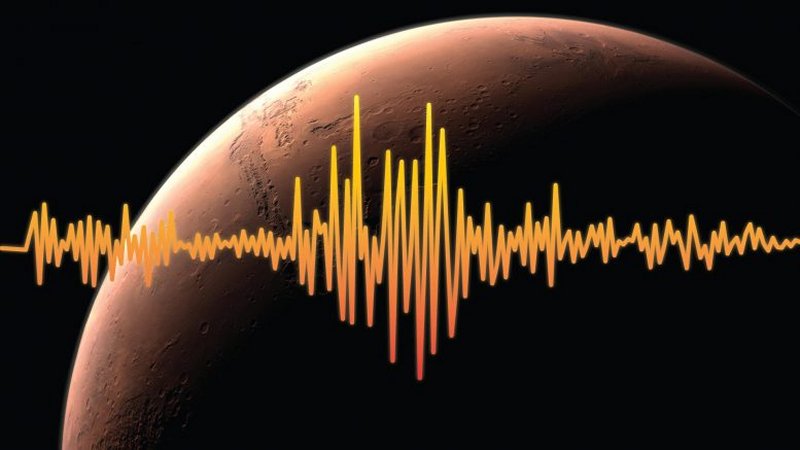Eddie Gonzales Jr. – MessageToEagle.com – Mars is still full of surprises. Scientists are trying to figure out why Mars is shaking so much and at the same time determine the source of the unexpected signals originating from the Red Planet.
Marsquakes differ from earthquakes in a number of ways, Savas Ceylan of ETH Zürich explained. To begin with, they are much smaller than earthquakes, with the largest event recorded at teleseismic distances around magnitude 3.6. SEIS is able to detect these small events because the background seismic noise on Mars can be much lower than on Earth, without the constant tremor produced by ocean waves.
Mars is shaking. Credit: NASA / JPL – Caltech
“For much of a Martian year, from around sunset until early hours, the Martian atmosphere becomes very quiet, so there is no local noise either,” he said. “Additionally, our sensors are optimized and shielded for operating under severe Martian conditions, such as extremely low temperatures and the extreme diurnal temperature fluctuations on the red planet.”
Marsquakes also come in two distinct varieties: low-frequency events with seismic waves propagating at various depths in the planet’s mantle, and high-frequency events with waves that appear to propagate through the crust. “In terms of how the seismic energy decays over time, the low-frequency events appear to be more like earthquakes” in which the shaking dies away relatively quickly, Ceylan said, “while the high-frequency events are resembling moonquakes” in persisting for longer periods.
The vast majority of the events are high-frequency and occur at hundreds of kilometers of distance from the lander. “It is not quite clear to us how these events could be confined to only high frequency energy while they occur at such large distances,” he said. “On top of that, the frequency of those events seems to vary over the Martian year, which is a pattern that we do not know at all from Earth.”
Only a handful of marsquakes have clear seismic phase arrivals–the order in which the different types of seismic waves arrive at a location–which allows researchers to calculate the direction and distance the waves come from. All these marsquakes originate from a sunken area of the surface called Cerberus Fossae, about 1800 kilometers away from the InSight Lander.
Cerberus Fossae is one of the youngest geological structures on Mars, and may have formed from extensional faulting or subsidence due to dike emplacement. Recent studies suggest extension mechanism may be the source of the Cerberus Fossae quakes, Ceylan noted, “however, we have a long way in front of us to be able to explain the main tectonic mechanisms behind these quakes.”
The biggest challenge for The Marsquake Service and InSight science team has been “adapting to unexpected signals in the data from a new planet,” Ceylan said.
Although there were significant efforts to shield SEIS from non-seismic noise by covering it and placing it directly on the Martian surface, its data are still contaminated by weather and lander noise.
InSight is the first mission dedicated to investigating the deep interior of Mars. This artist’s concept depicts the InSight lander on Mars after the lander’s robotic arm has deployed a seismometer and a heat probe directly onto the ground. Credit: NASA/JPL-Caltech
“We needed to understand the noise on Mars from scratch, discover how our seismometers behave, how the atmosphere of Mars affects seismic recordings, and find alternative methods to interpret the data properly,” said Ceylan.
It took the Service a while to be “confident in identifying the different event types,” he added, “discriminating these weak signals from the rich and varied background noise, and being able to characterize these novel signals in a systematic manner to provide a self-consistent catalog.”
Written by Eddie Gonzales Jr. – MessageToEagle.com Staff







